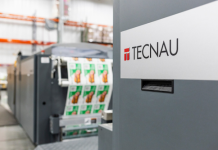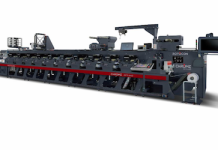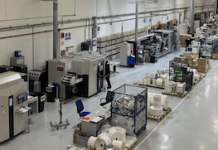According to Laurel Brunner of the Verdis Project, ISO 22067-1 will add greater detail to environmental impact measurements and assessments. This is needed because so often environmental labels are based on sketchy data gleaned from assessors with little understanding of print or of its sustainability.
Print is often penalised because assessors are not equipped to consider the wider picture of print’s sustainability. Factors such as print’s recyclability and resource protection can easily be overlooked. Similarly, digital printing is not recognised for its ability to produce work on demand cutting waste to nil because only those documents that are required are produced. Printing on demand also does away with the need to store print or transport it to a warehouse, all of which involves emissions.
Voting is now underway to turn ISO 22067-1 (Requirements for communication of environmental aspects of printed products — Part 1: General printing) into a fully fledged ISO standard. The document is at the Draft International Standard stage and despite none too few rocky moments it has the support of several ISO technical committees and the people they represent. This includes Technical Committee 6, which is responsible for standards in the pulp and paper industries and generally disinclined to support work that its members might find distasteful.
The objective to make the graphics industry more environmentally accountable and sustainable so ISO 22067-1 is the first in a series of documents. This first part provides requirements for communicating various environmental aspects (things that might impact the environment) of products and processes in print production. The idea is to make those communications more effective and meaningful so that commercial labelling schemes have sufficient detail to make more robust and accurate assessments. Over time this will make it easier to compare like with like and harder for companies to fudge assessments. This can happen absent robust datasets.
Despite predictions of its demise, print is everywhere from receipts to books, packaging, flooring and so on. To ensure a long and healthy future we must all recognise the need for print’s environmental accountability. As the industry continues to shrink and the production base shifts to new technologies, this is even more urgent. ISO standards are only part of the picture but they are the only part of the picture which look to encourage transparency in a notoriously opaque industry.
This article was produced by the Verdigris Project, an industry initiative intended to raise awareness of print’s positive environmental impact. Verdigris is supported by: FESPA (www.fespa.com), Fujifilm (www.fujifilm.com/sustainability/), HP (www.hp.com), Kodak (www.Kodak.com/go/sustainability), Practical Publishing (www.practicalpublishing.co.za), Miraclon (https://miraclon.com), Unity Publishing (http://unity-publishing.co.uk) and Xeikon (www.xeikon.com).
THE VERDIGRIS PROJECT
http://verdigrisproject.com/





















